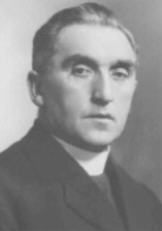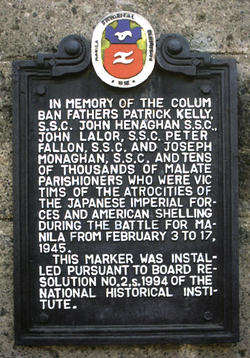
Forgive us as we forgive! We ask for the same treatment of ourselves that we are prepared to give our fellow man; and in this manner we limit even God’s mercy and pity by the hardness and cruelty of own hearts. It is no mere cold external forgiveness but one from our heart that God insists on towards our neighbor. God’s mercy, as it were, becomes dependent on our own choice and the character of our judgment hangs upon our treatment of others. Thus it may be a blessing or a curse that we ask for in this prayer. How shameless we should be to ask God to forgive our sins if our heart is merciless towards our neighbor. We cannot go beyond our Lord’s own words: ‘When you shall stand to pray, forgive if you have anything against any man, that your Father also Who is in Heaven may forgive you your sins’ We have no greater guarantee of being the children of God than this readiness to forgive others. This is the test that goes down to the very foundations of our spiritual life. It is the one great lesson that our Lord taught and sealed with His Blood. More than prayers or penances or fasting or great labors to show our love for God is the heart that pardons others. Generosity in this matter will open the flood-gates of God’s charity. If we want to become like Christ we must pardon, like Him, without limits or reserve. He has placed no bounds to His mercy. Unto ‘seventy times seven’. He is ready to forgive when we turn towards Him. We have only to remember how He forgives to realize the obligation that rests on us. -Pathways to God, Fr John Henaghan |
Father Henaghan and three other Columbans serving in Our Lady of Remedies Parish, Malate, Manila, during World War II, Frs Peter Fallon, Patrick Kelly and Joseph Monaghan, were taken away by the Japanese on 10 February 1945 and never seen again. The fifth Columban in Malate, Fr John Lalor, was killed three days later while helping in Malate School, which had been turned into a hospital, when a shell exploded nearby. The five are known to us Columbans as ‘The Malate Martyrs’. About 100,000 died in February 1945 during the Battle of Manila. Columban Fr Michael Martin, currently serving in Malate, speaks about The Malate Martyrs in this video. |
How our six priests died in the Philippines The following account of the deaths of six Columbans in the Philippines during World War II first appeared in The Far East, magazine of the Columbans in Australia and New Zealand, in June 1945. Some details about dates are different from what became known later. Here are the official dates for the deaths of the priests. Fr Douglas, 27 July 1943, Frs Fallon, Henaghan, Kelly and Monaghan, 10 February 1945 and Fr Lalor 13 February 1945. The five priests killed at Malate have been called the Malate Martyrs. Missionaries who stay with their people during war run the risk of being killed with them. The sorrowful news of the deaths of six priests of St Columban’s in the Philippines reached us with the news of the fall of Manila. The facts were officially confirmed some time later, and with the arrival in Australia of the former Philippine internees, we received additional details of the sad events. It appears that five of the six priests had been murdered by the Japanese. Here are some extracts from the accounts we have received: ‘Fr Francis Vernon Douglas [who went to the Philippines from New Zealand in 1938] died nearly two years ago, a death worthy of the highest traditions of missionary heroes. His parish of Pililla, Rizal, thirty-five miles from Manila, was a center of that Filipino guerrilla activity which hastened the liberation of the country. ‘Spies had reported to the Japanese that guerrillas frequently visited the church and convento (rectory) to go to Mass and confession, and that Fr Douglas had been called to the mountains to minister to wounded men. The Japanese military police thereupon demanded to know what the guerrillas told the priest when they came to see him. Fr Douglas replied that this was a question they had no right to ask, and that to answer it would go against his conscience. |
|
Three Days of Martyrdom ‘For this answer the priest was severely beaten and that night was taken to the baptistery of the neighboring church of Paete, Rizal. Here the investigation under torture was continued for three days and nights. The Filipino parish priest told me that Father must have suffered a martyrdom during those days, as his cries and groans were almost continuous. ‘At the end of three days he asked the Japanese to call the Filipino priest to hear his confession. Strange to say, they granted his request. The parish priest said that he found Fr Douglas in a pitiable condition, covered with blood and wounds from head to foot, and with all the appearance of a dying man. He made his confession and asked the priest to convey the news of the happenings to the St Columban priests at Malate, Manila. ‘That evening he died, and the Japanese removed his body. In spite of every effort made by the Apostolic Delegate to the Philippines, it has never been discovered’. |
At Malate, Manila.
‘Fr John Lalor was killed by shell fire while attending to his duties in the hospital. ‘That same afternoon, Frs Henaghan, Kelly, Fallon and Monaghan were arrested by the military police and taken to a nearby apartment house. A few days later, the bodies of Fr Henaghan and Kelly were seen and recognized lying outside the house. They were dressed in their soutanes and showed signs of a violent death. They were buried where they lay. Frs Fallon and Monaghan were never seen again; their bodies must have been buried under the ruins of the apartment house. ‘The church and convento at Malate were utterly destroyed.’ |



 ‘Concerning the deaths of the five priests at Malate, less is known. They all died about February 9 of this year, just before General MacArthur entered Manila.
‘Concerning the deaths of the five priests at Malate, less is known. They all died about February 9 of this year, just before General MacArthur entered Manila.